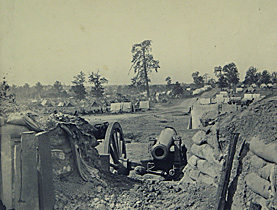“Mother” wines and dines “daughter city” delegation

The Swiss capital has helped its official daughter city in the United States, New Bern, launch its tricentennial celebrations.
A delegation from the North Carolina city was guest of honour at a number of events in Bern in December and got an inside view of the castle where New Bern’s founding father, Christophe de Graffenried, once resided.
The weeklong visit kicked off with a walking tour of Bern’s old town.
“It’s a jewel,” enthused Tom Bayliss, New Bern mayor, who overcame his fear of flying to make his first trip to Europe. He visited Bern after stopping over in London and Paris.
“After seeing those two, how could this be any better? But to get here and see Bern – its uniqueness and beauty – it makes me more proud that we are a daughter city.”
And the group learned a few trivial facts and figures about Bern from its mayor Alexander Tschäppät.
In his welcoming address, Tschäppät earned a few chuckles by reading off a long list of statistics, telling his American guests how many cows and sheep are in the city, as well as dogs and the number of trees they could mark.
Joking aside, Tschäppät explained to swissinfo.ch why Bern was wining and dining representatives from a small American east coast town even though there was little to be gained economically.
Oldest New Bern
“It’s an old tradition to celebrate with Berns all over the world. There are a lot of Berns in the United States and on other continents and this is the oldest one in the US.”
Despite the fact New Bern was founded in 1710 by a Swiss, today’s ties only go back to the late 19th century. In 1891, New Bern’s mayor crossed the Atlantic to help Bern celebrate its 700th anniversary.
“Old” Bern reciprocated five years later by sending an official delegation to the North Carolina city where they donated a Bern flag and consented to a request by New Bern to adopt the Swiss city’s banner with its bear.
“Just as there is relatively little Swiss heritage in New Bern today—I mean we were English—it’s our desire to have a relationship with our origins,” said New Bern historian, Nelson McDaniel.
“Whether we have a town that is full of Swiss people is less important than knowing what our origins are.”
After making an obligatory tour of a cheese dairy in the rolling countryside of the Emmental—the region where some of the first New Bern settlers came from—the delegation was shown around the stately residences of their town’s founder and his family.
Cracked walls and cobwebs
De Graffenried lived for a time in the “old” castle in the town of Worb, just outside the Swiss capital. Despite the medieval structure’s worn floorboards, cracked walls and cobwebs, the Americans were given a sense of the grandeur the Swiss adventurer left behind.
It is a stone’s throw away from Worb’s “new” castle – the mansion built by de Graffenried’s son, Franz Ludwig, who commissioned its construction after falling out with his father. Christophe Graffenried returned to Switzerland a financially broken man.
Today’s leading member of the von Graffenried clan resides in the restored villa and also played host to the Americans.
The 84-year-old private banker and media mogul, Charles von Graffenried, has proven to be a better businessman than his ancestor. His worth is estimated at between SFr300-400 million ($298-$397 million), making him one of the 300 richest men in Switzerland.
The Americans got to admire gold-framed portraits of various von Graffenrieds through the ages and walk through the underground network of conference rooms from where Charles rules his “old world” empire.
He has an “obligation”, von Graffenried told swissinfo.ch, to tell the group from New Bern about the family.
One member of the New Bern delegation, Linda Staunch, who is head of the committee organising the tricentennial events, said the visit to Switzerland, and New Bern’s mother city, had left a deep impression on her.
“When I go back I’ll say I feel like I’ve been in an old city that has a sense of pride, and is passing that along to us.”
swissinfo.ch, Dale Bechtel
Christophe de Graffenried was born in his ancestral village of Worb in 1661 and died there in 1743. His father, Anton, was Lord of Worb and a minor government official.
De Graffenried studied at the universities of Heidelberg and Leyden. During his travels to London, he met the Duke of Albemarle and other Lords Proprietors of Carolina.
Back in Switzerland, he met a Swiss explorer, Franz Ludwig Michel, who persuaded him to join and invest in a company that proposed to mine American silver deposits and to settle Swiss and Swiss Anabaptists in Pennsylvania or Virginia.
The company broadened its plans to settle colonists in the province of Carolina and to include among them many Palatines.
The company purchased from the Lords Proprietors nearly 19,000 acres of land on the Neuse and Trent rivers, including the future site of New Bern, and on the White Oak River, which de Graffenried called by the Indian name of Weetock.

In compliance with the JTI standards
More: SWI swissinfo.ch certified by the Journalism Trust Initiative














You can find an overview of ongoing debates with our journalists here . Please join us!
If you want to start a conversation about a topic raised in this article or want to report factual errors, email us at english@swissinfo.ch.